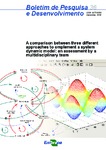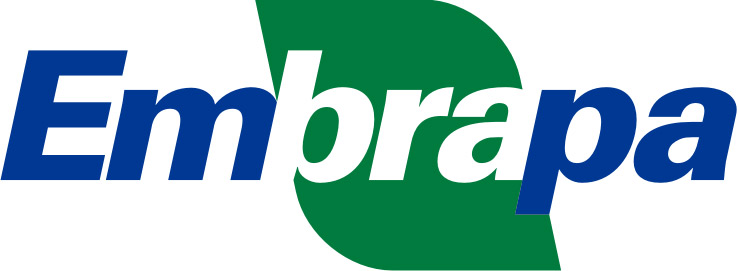Use este identificador para citar ou linkar para este item:
http://www.infoteca.cnptia.embrapa.br/infoteca/handle/doc/1008307Registro completo de metadados
| Campo DC | Valor | Idioma |
|---|---|---|
| dc.contributor.author | FREUA, M. C. | pt_BR |
| dc.contributor.author | BARIONI, L. G. | pt_BR |
| dc.contributor.author | VILAMIU, R. G. d'A. | pt_BR |
| dc.contributor.author | DIAS, F. R. T. | pt_BR |
| dc.date.accessioned | 2015-02-10T11:11:11Z | pt_BR |
| dc.date.available | 2015-02-10T11:11:11Z | pt_BR |
| dc.date.created | 2015-02-10 | pt_BR |
| dc.date.issued | 2014 | pt_BR |
| dc.identifier.citation | Campinas: Embrapa Informática Agropecuária, 2014. | pt_BR |
| dc.identifier.issn | 1677-9266 | pt_BR |
| dc.identifier.uri | http://www.infoteca.cnptia.embrapa.br/infoteca/handle/doc/1008307 | pt_BR |
| dc.description | In the last few decades, application of system dynamics models (SDM) has disseminated through the agricultural sciences. Modeling groups are now much more multidisciplinary once the models currently developed are applied to larger frameworks. The literature has been inconclusive with regard to empirical evidence of the trade-offs between different paradigms to implement SDMs. In order to gain insight on the advantages and disadvantages between the paradigms we simulated a working group environment with seven researchers coming from various educational backgrounds where they had to implement a process-based SDM and fill in a questionnaire scoring characteristics of the paradigms and implementation process. The participants were divided into three groups according to their expertise: NAA, formed by procedural programming experts that performed the exercise in MATLAB®; OOA, formed by objected-oriented programming experts that performed the exercise in a C++ simulation framework; and GDA, the domain expert that performed the exercise in Vensim®. The approaches were ranked NAA > OOA > GDA for mathematical expressiveness, GDA > OOA > NAA for visual expressiveness, OOA > NAA = GDA for scalability and code reuse, and NAA = OOA > GDA for software integration. Based on the questionnaire and group discussions, a descriptive framework of what should be considered to identify the most appropriate implementation strategy for a SDM was developed. We suggest that the choice of what strategy to use should be driven by a combination of variables related to the model characteristics, group member's expertise and the properties intrinsic to each programming paradigm. Further research is needed to extend the analysis of how the decision on the paradigms should be related to the SDM characteristics, the time available, and the modeling group member's expertise. | pt_BR |
| dc.language.iso | eng | eng |
| dc.relation.ispartofseries | (Embrapa Informática Agropecuária. Boletim de pesquisa e desenvolvimento, 36). | pt_BR |
| dc.rights | openAccess | eng |
| dc.subject | Modelos agrícolas | pt_BR |
| dc.subject | Modelo dinâmico | pt_BR |
| dc.subject | Programação orientada a objetos | pt_BR |
| dc.subject | Agricultural models | pt_BR |
| dc.subject | Objected-oriented programming | pt_BR |
| dc.title | A comparison between three different approaches to implement a system dynamic model: an assessment by a multidisciplinary team. | pt_BR |
| dc.type | Folhetos | pt_BR |
| dc.date.updated | 2015-02-24T11:11:11Z | pt_BR |
| dc.subject.thesagro | Modelo Matemático | pt_BR |
| dc.subject.nalthesaurus | Mathematical models | pt_BR |
| dc.subject.nalthesaurus | dynamic models | pt_BR |
| dc.format.extent2 | 19 p. | pt_BR |
| riaa.ainfo.id | 1008307 | pt_BR |
| riaa.ainfo.lastupdate | 2015-02-24 | pt_BR |
| dc.contributor.institution | MATEUS CASTELANI FREUA, USP; LUIS GUSTAVO BARIONI, CNPTIA; RAPHAEL GUSTAVO D’ALMEIDA VILAMIU, Cefet-RJ; FERNANDO RODRIGUES TEIXEIRA DIAS, CPAP. | pt_BR |
| Aparece nas coleções: | Boletim de Pesquisa e Desenvolvimento (CNPTIA)  | |
Arquivos associados a este item:
| Arquivo | Descrição | Tamanho | Formato | |
|---|---|---|---|---|
| LivroBolPesq36.pdf | 1,63 MB | Adobe PDF |  Visualizar/Abrir |









